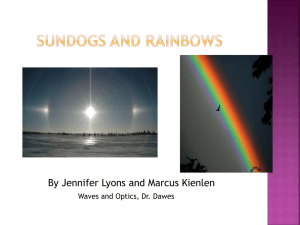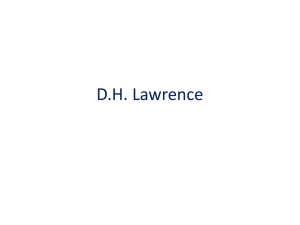Rainbows and Refraction Powerpoint
advertisement
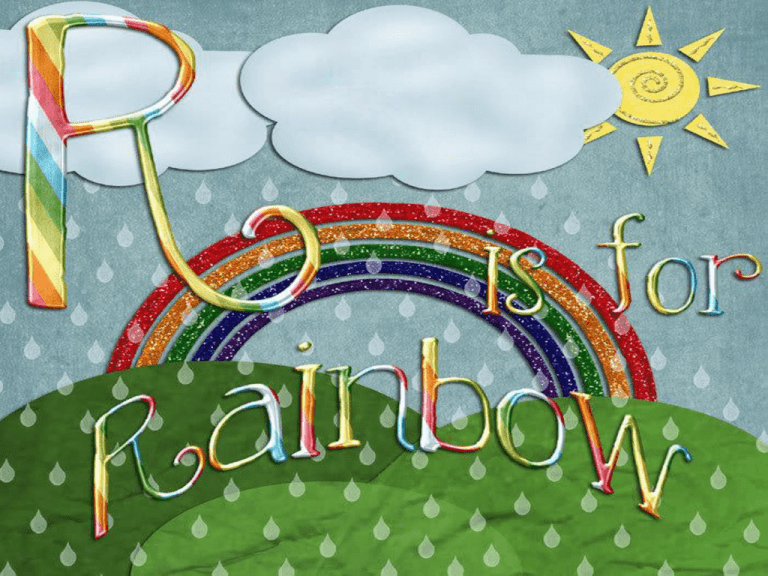
Let’s Review Reflect-to bounce off a surface Refraction-bending of light as it moves from one material into another Absorb-to take in Let’s Review Transparent-letting light pass through easily Translucent-letting some, but not all, light through Opaque-blocking light Review Stations 5 minutes per station: Reflection Refraction Absorption Translucent, Transparent, and Opaque Let’s Make a Rainbow http://www.youtube.com/watch?v=ugX1qbBhJEU Think, Think, Think… How do you think a rainbow is formed? Draw what you think a rainbow looks like. Rainbows and Refraction White light is made of all colors. These colors can be seen in a rainbow or when white light passes through a prism. A prism is a solid, transparent object that refracts, or bends, light that passes through it. Prisms separate the colors that make up white light into a band of colors called the visible spectrum. Rainbows and Refraction Each color of the visible spectrum is refracted a different amount. Violet light has the shortest wavelength, and it is refracted the most. Red light has the longest wavelength and is refracted the least. Rainbows and Refraction The birth of each rainbow begins with millions of tiny rain droplets. The rain droplets serve as a type of reflector of light. White light enters one individual rain droplet and exits as one specific color of the spectrum. Without millions of rain droplets, a rainbow would not occur. If you only had a few rain droplets you would only see a few colors. This is typically why rainbow appear after a rain storm. Rainbows and Refraction Each rain droplet has a function in the formation of the rainbow. Sunlight enters the rain droplet at a specific angle and the rain droplet separates the white light into many different colors. <http://faculty.cord.edu/manning/physics215/stu dentpages/genamahlen.html> Let’s Make a Rainbow Work in groups to create a rainbow using a flashlight and a prism. Have one person hold the white foam board while another person shines the flashlight into the prism and onto the board. The lights in the room will be turned off while you do the activity. What appears on the board when you shine the light through the prism? Let’s Discuss On the opposite side of your note card, draw a rainbow with the colors in the correct order. Write a short summary, 2-3 sentences, of what you learned about rainbows and refraction. Let’s Discuss What is reflection, refraction, and absorption? What is translucent, transparent, and opaque? How is a rainbow formed using a prism? How is a rainbow formed on a rainy day?
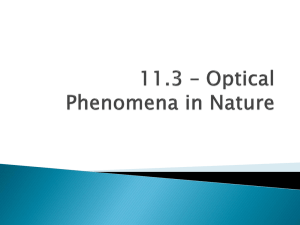
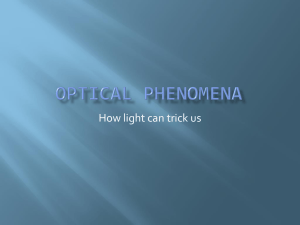
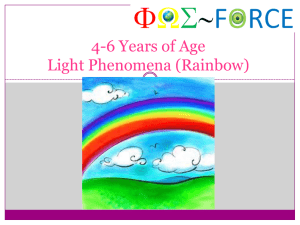
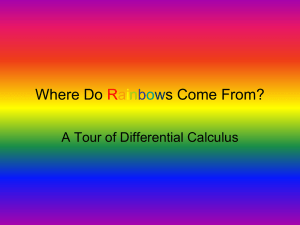

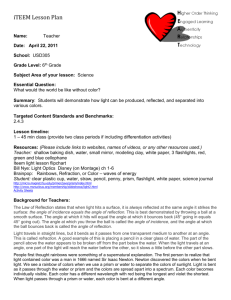
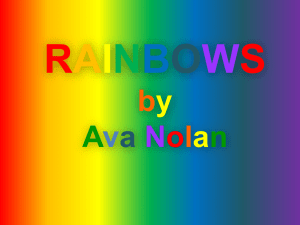
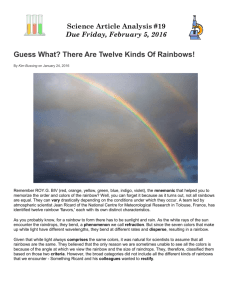
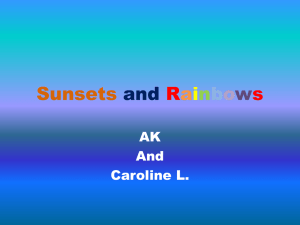
![Rainbow Sandals[1]](http://s2.studylib.net/store/data/005415944_1-86d746c06518ebd8de8a03e56a4931b4-300x300.png)
